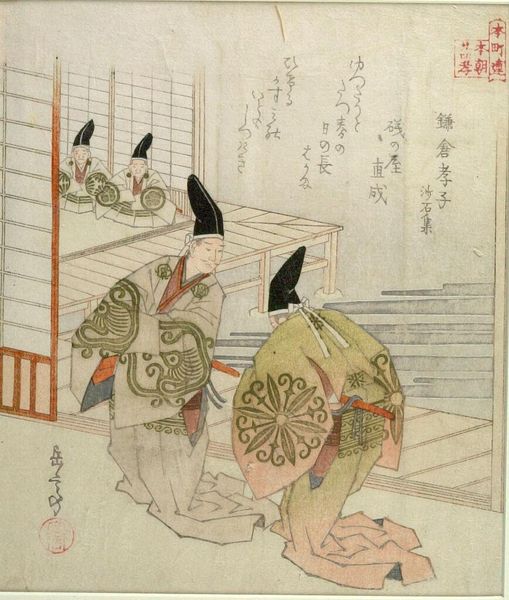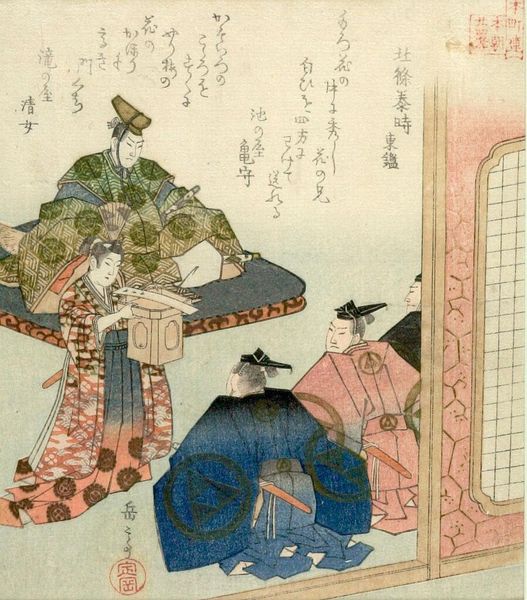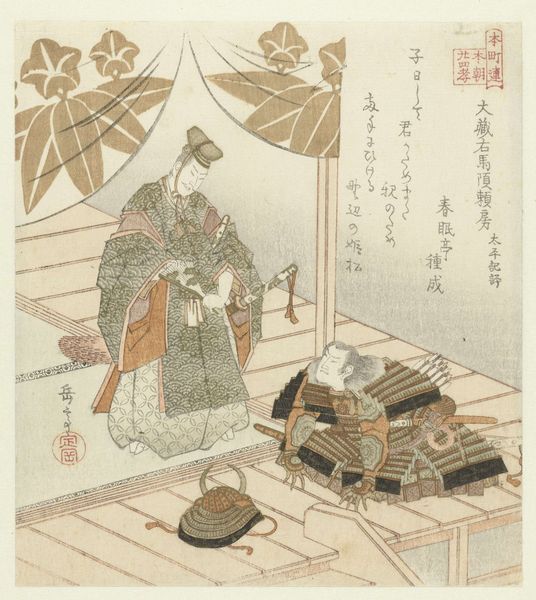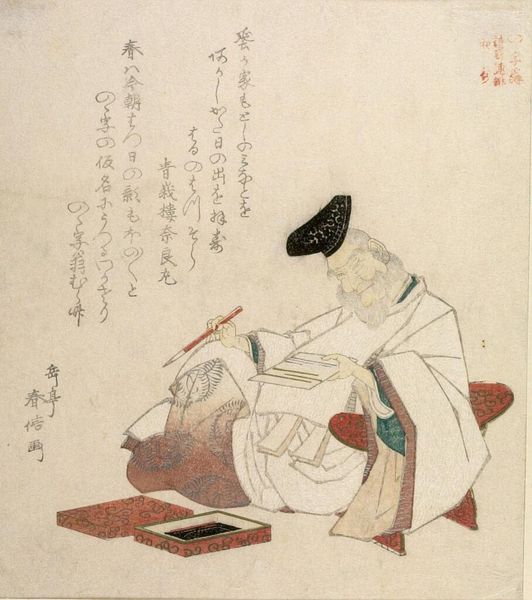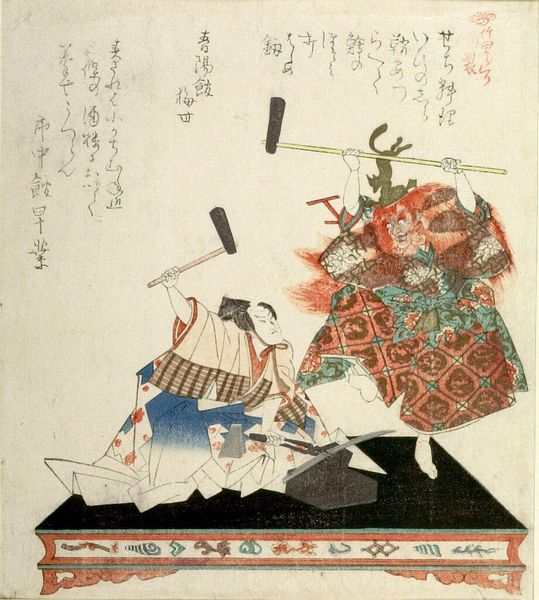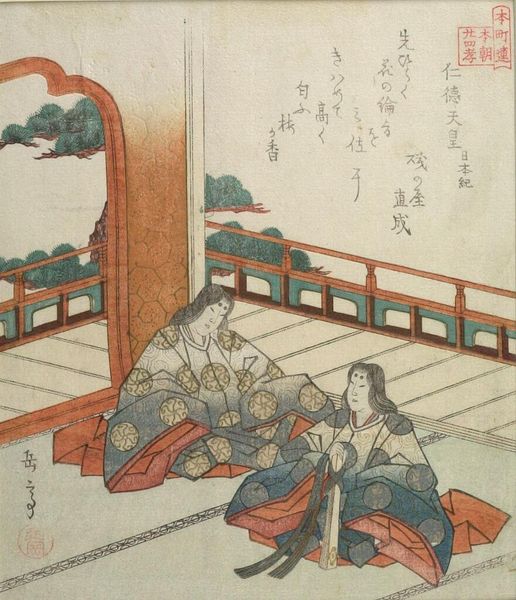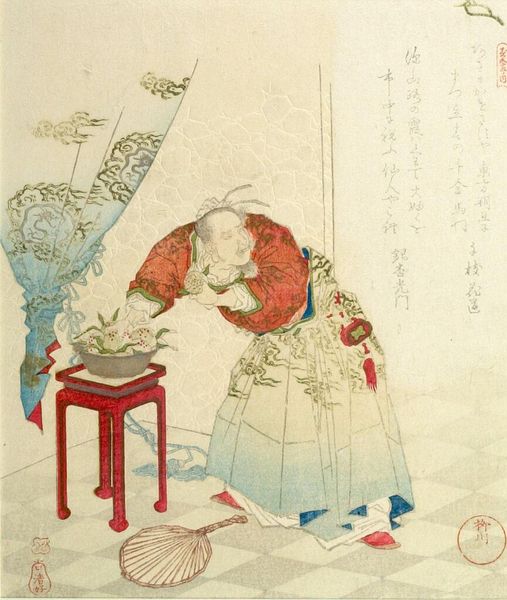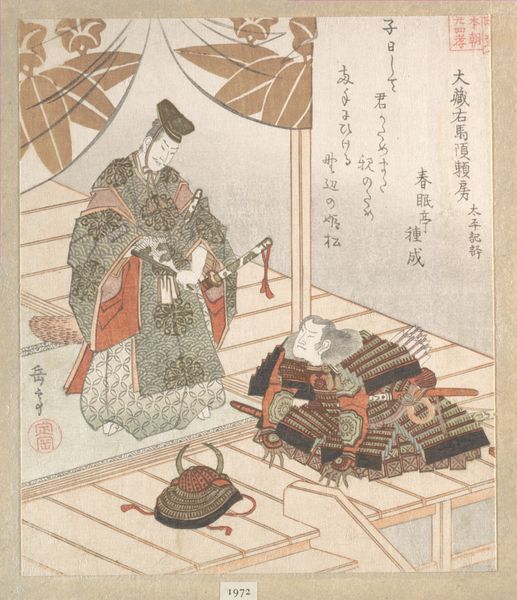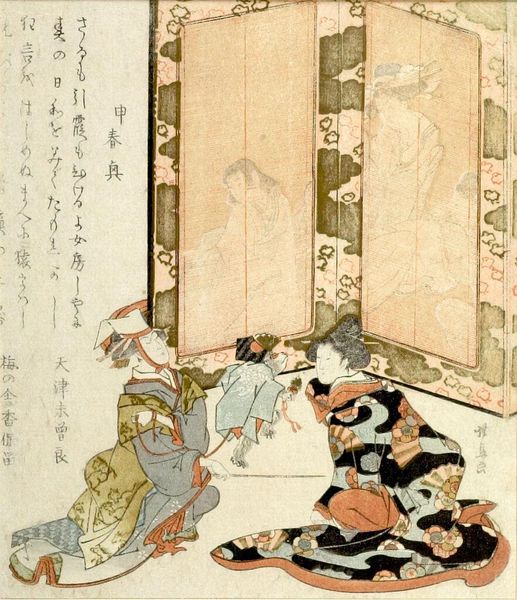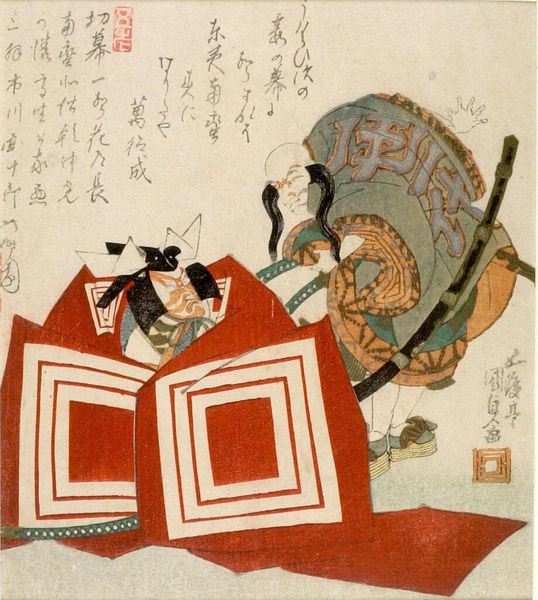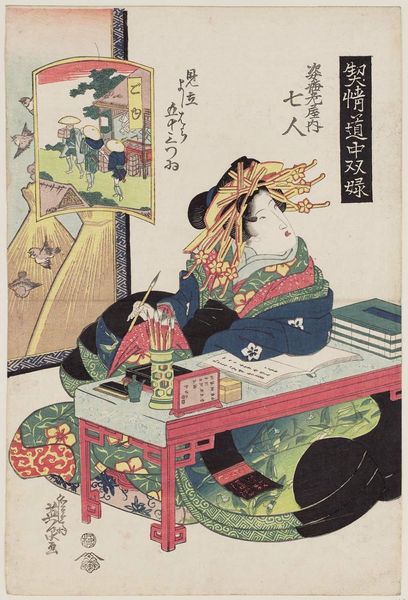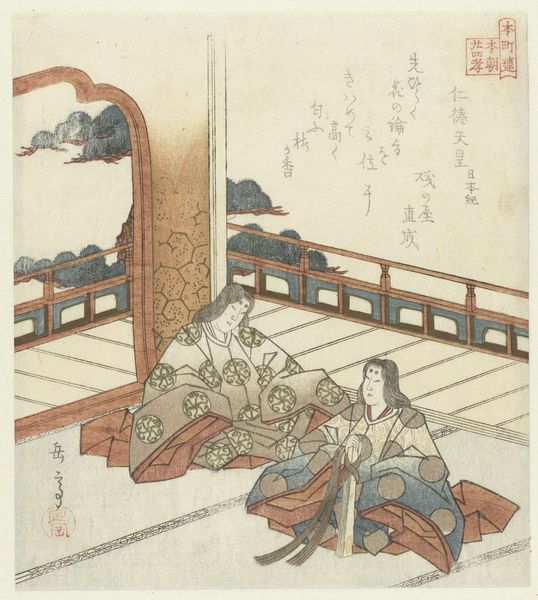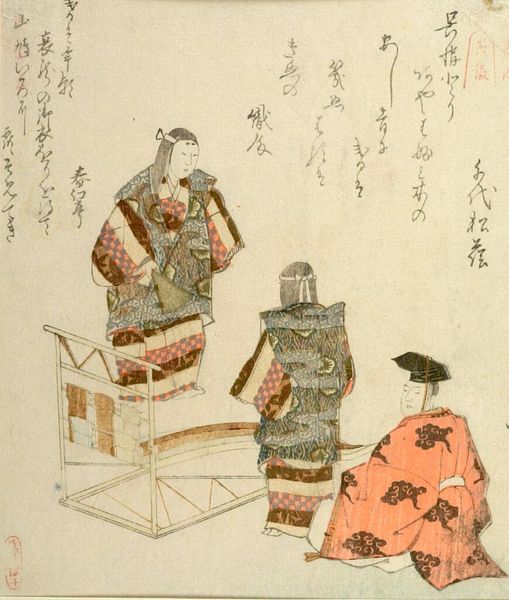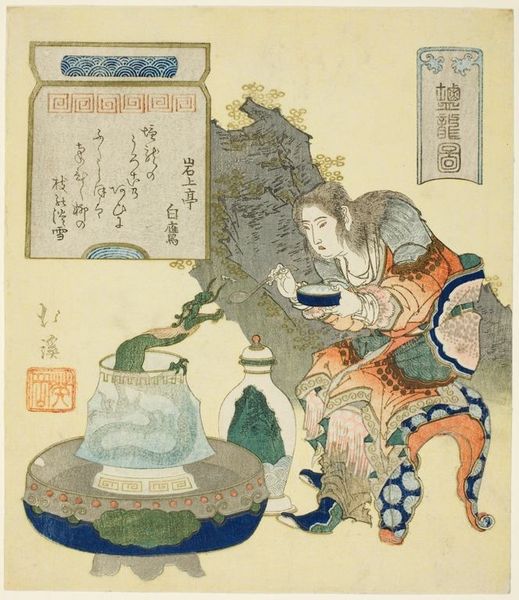
Åkura Uma no kami Yorifusa (Taiheikdan), from the series Twenty-Four Japanese Paragons of Filial Piety for the HonchÅ Circle (HonchÅren honchÅ nijÅ«shikÅ), with poem by Shunmintei Tanenari c. 1821 - 1822
0:00
0:00
Dimensions: Paper: H. 20.9 cm x W. 18.0 cm (8 1/4 x 7 1/16 in.)
Copyright: CC0 1.0
Editor: This woodblock print by Yashima Gakutei depicts Åkura Uma no kami Yorifusa, and it's part of a series about filial piety. The scene is intense; someone lies prone in armor as another figure stands with a sword. How should we interpret the act of filial piety presented here? Curator: The print, situated within the HonchÅ tradition, compels us to question whose stories are being told and from what perspectives. The poem included is worth closer study. Who benefits from the visual rhetoric of loyalty? Editor: So, you're saying it's not just about honoring parents, but also about the political implications of that honor? Curator: Exactly. Consider how representations of duty and self-sacrifice can be manipulated to serve broader social structures. Editor: That gives me a lot to think about. It’s more than just a historical scene; it’s a commentary on power. Curator: Yes, and understanding that lens allows us to critically engage with the work's legacy.
Comments
No comments
Be the first to comment and join the conversation on the ultimate creative platform.
